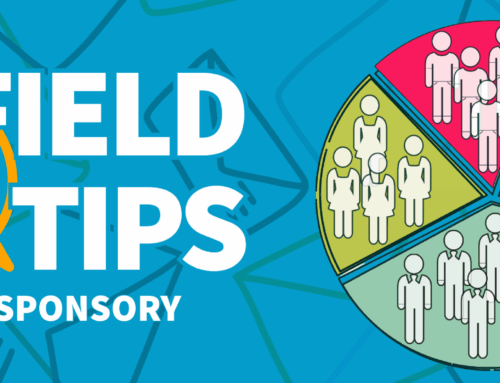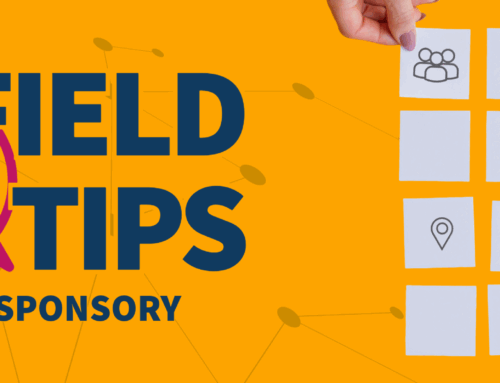Can You Really Trust AI with Your Marketing Content? + Industry News and Insights
Field Tips is a biweekly email series bringing you the latest marketing trends and topics directly to your inbox. Covering everything from digital marketing and social media to content strategy and more, we curate the industry’s top stories and present them as easily digestible insights. The content contained within this post comes directly from our June 11, 2025 issue. If you’d like to receive Field Tips, subscribe to our email or on LinkedIn.
We’ve been hearing it a lot lately: “Is it safe to use AI for our marketing content?” Fair question. The short answer is yes, but only with the right oversight.
AI can crank out content fast. But Google’s made it clear: low-quality, auto-generated copy could hurt your rankings. That’s why the best approach is a smart balance. Let AI do the heavy lifting, but keep a human in the driver’s seat.
Here’s how strategically and safely incorporate AI into your content flow:
- Use AI for speed and structure — outlines, drafts, headlines and quick ideation.
- Bring in humans for context and quality — fact-checking, voice, nuance and brand storytelling still need a human touch.
- Think “AI-assisted,” not “AI-only.” Google rewards helpful content. That still means thoughtful, accurate, people-first copy.
Bottom line: AI is a tool. Your brand voice and expertise is the real differentiator.
Have you started experimenting with AI content creation? Contact us; we’re happy to share advice on integrating AI smartly or helping you scale with the right mix of automation and human input.
Google’s AI Is Stealing the Show from Publishers
WHAT’S HAPPENING. Google’s new AI Overviews feature, which shows AI-generated summaries at the top of search results, is drastically reducing traffic to many publisher websites. The summaries pull answers directly from multiple sources, meaning users often get the info they need without clicking through to original articles. Some publishers report double-digit drops in search traffic since the rollout began, raising serious concerns about sustainability and visibility for content-driven businesses.
WHY IT MATTERS. With fewer people clicking on actual links, it’s becoming harder for brands to reach audiences through traditional content strategies. Marketers may need to rethink how they optimize for visibility—focusing more on branded queries, direct channels like email, and possibly even publishing through platforms Google favors. It also underscores the need for adapting to AI-powered discovery, not just old-school search.
New Tools from Google Make Ads Smarter and More Personal
WHAT’S HAPPENING. At Google Marketing Live 2025, Google unveiled over 30 new AI-driven features across its advertising platforms. Key highlights include enhanced Performance Max campaigns with generative AI capabilities, allowing for automated creation of text and image assets. New visual brand profiles in Search and the “Shop the Look” feature in Shopping ads aim to make ads more immersive and tailored to user intent. Additionally, Google introduced advanced measurement tools like Data Manager to help marketers better utilize first-party data and prove ROI.
WHY IT MATTERS. These updates signify a major shift towards AI-powered advertising, emphasizing automation and personalization. For marketers, this means adapting to tools that can efficiently create and optimize ad content, potentially reducing manual workload. The focus on first-party data and enhanced measurement tools also addresses growing privacy concerns and the need for more accurate performance tracking. Embracing these changes can lead to more effective campaigns and better alignment with evolving consumer behaviors.
Most Consumers Are Skeptical of AI Content
WHAT’S HAPPENING. A Pew Research Center survey from August 2024 shows that 66% of U.S. adults are either extremely (34%) or very (32%) concerned about AI spreading false or inaccurate information. Another 26% are somewhat concerned. That means over 90% of respondents express at least some level of concern. Only a small minority—7% total—said they are “not too” or “not at all” concerned. The report also notes a generational split: millennials globally tend to trust AI more (62%) than baby boomers (25%).
WHY IT MATTERS. Marketers using AI tools—especially for content, customer service, or recommendations—need to take trust seriously. This data is a wake-up call that most consumers are already skeptical. If your brand uses AI, you should be clear, transparent, and fact-focused. Even small missteps could damage trust and loyalty. Marketers should also explore ways to show their AI’s reliability, like clear disclosures, human oversight, or linking to sources.
More To Explore
After AI Setbacks, Meta Bets Billions on Undefined “Superintelligence”
Meta’s making headlines by throwing billions into building “superintelligence” after some rocky AI setbacks—but no one’s really sure what that means yet. Read the full story on Ars Technica.
Bug with Google Search Console Discover Performance Report
Google just confirmed a bug in Search Console’s Discover report that’s been messing with traffic data—so don’t panic if your impressions and clicks look off. Get the lowdown on Search Engine Land.
Zero Clicks Does Not Mean Zero Sales
Even if no one’s clicking your links, they might still be buying—this quick breakdown explains how strong brand visibility across search, social, and AI tools can still drive real results, even when website traffic drops. Check it out on SparkToro.
OpenAI Taps Google in Unprecedented Cloud Deal Despite AI Rivalry
Despite being rivals in AI, OpenAI is now using Google Cloud in a rare move that signals just how complex and competitive the AI infrastructure game is getting. Read more on Reuters.
90% of AI Search Traffic Comes from Desktop
While mobile leads in overall traffic, most AI search referrals still come from desktop. Dig into the report and what it could mean for your marketing strategy on Search Engine Land.
The Ultimate Glossary of Digital Marketing Terms & Definitions
Confused by all the digital marketing jargon? This glossary from Responsory breaks down key metrics like bounce rate, CTR, and ROAS so you can actually use your data to make smarter marketing decisions. Read the full guide on Responsory.

About the Author
A prominent marketing strategist and nationally recognized thought leader, Grant A. Johnson is president and CEO of Responsory. He is a sought-after public speaker, direct marketing trainer, copywriter, award-winning author and the creator of Direct Branding℠, Responsory’s method for producing sure-fire measurable results.






